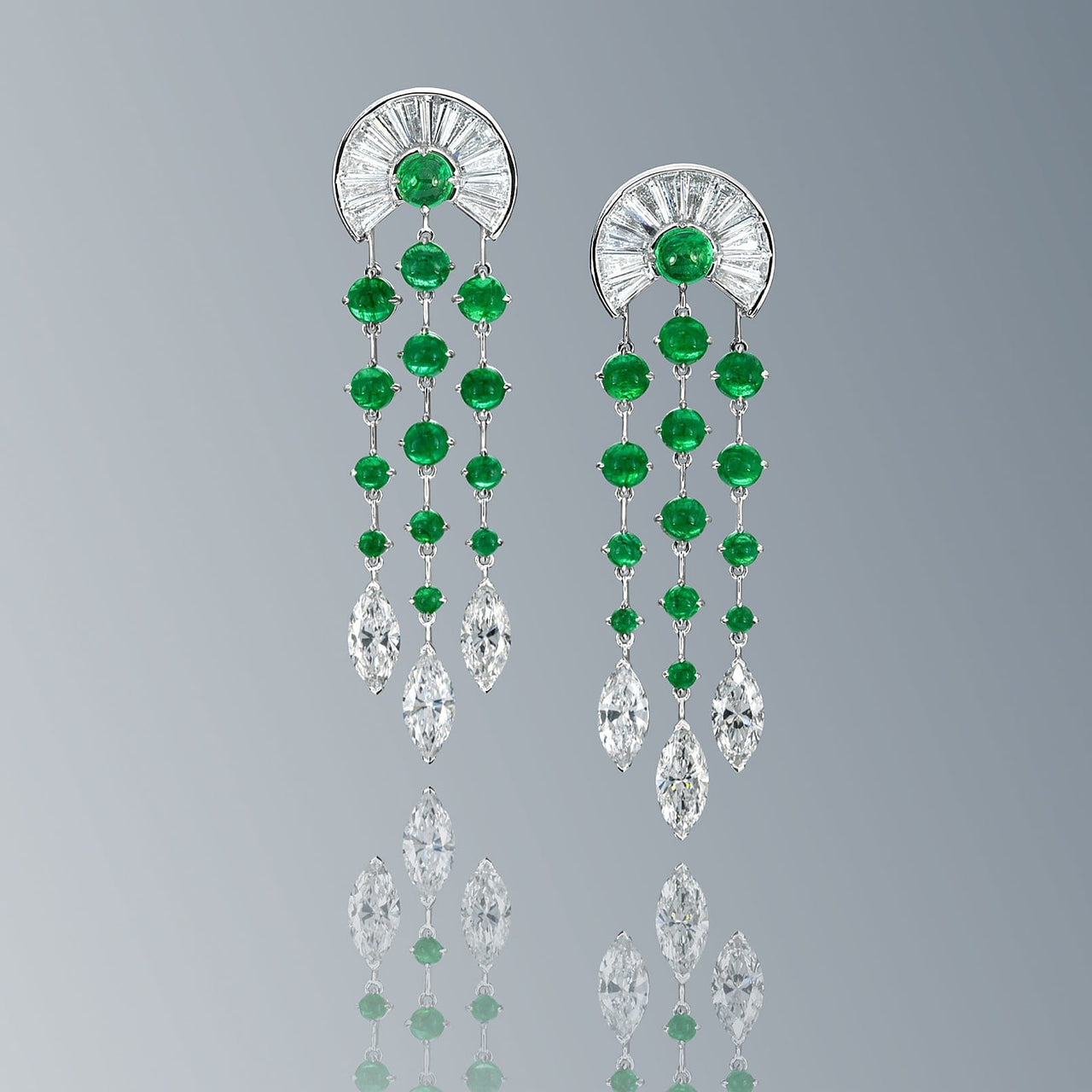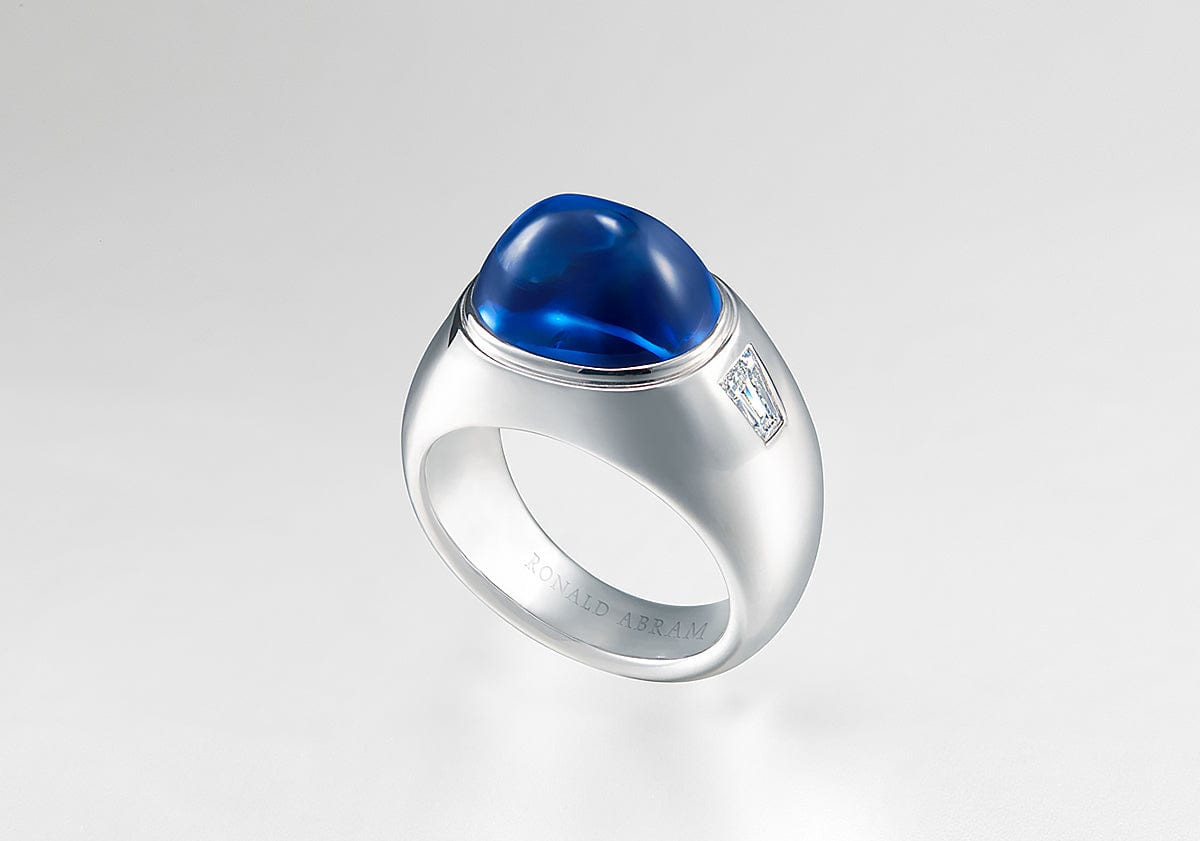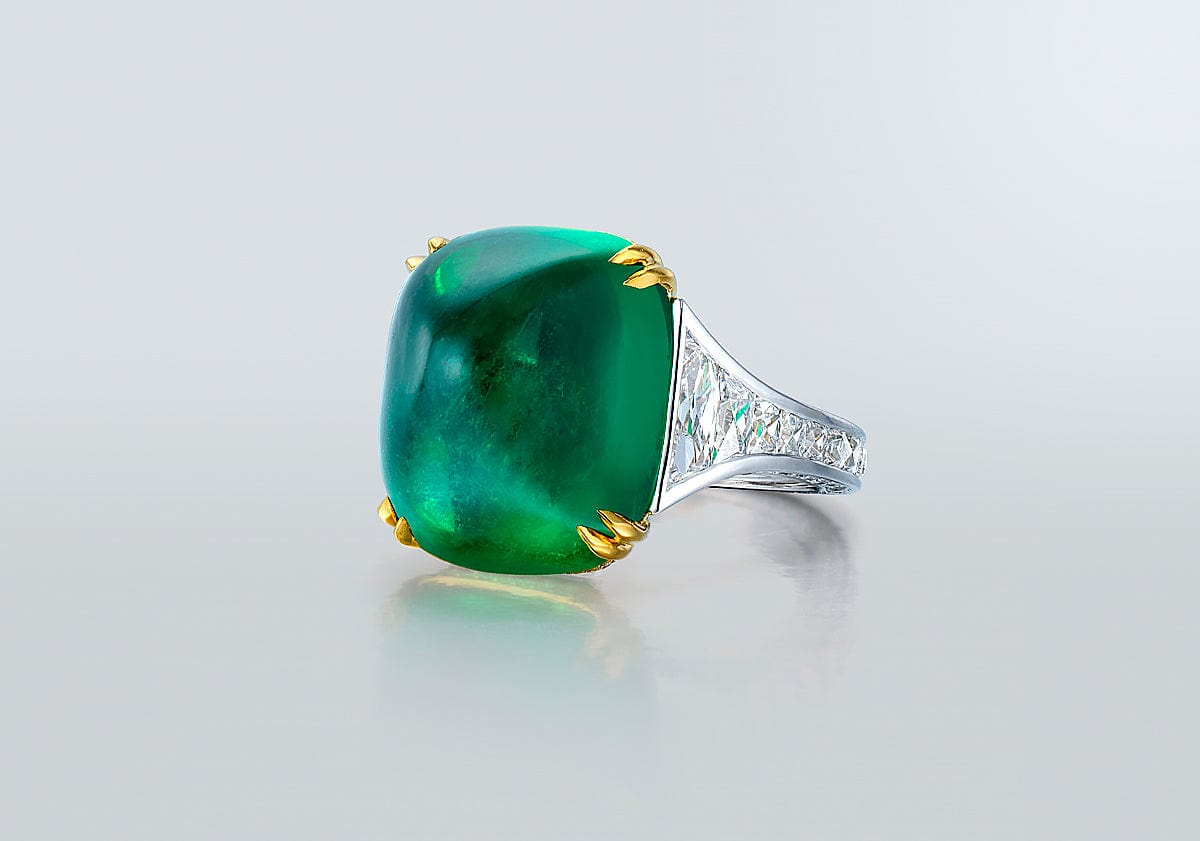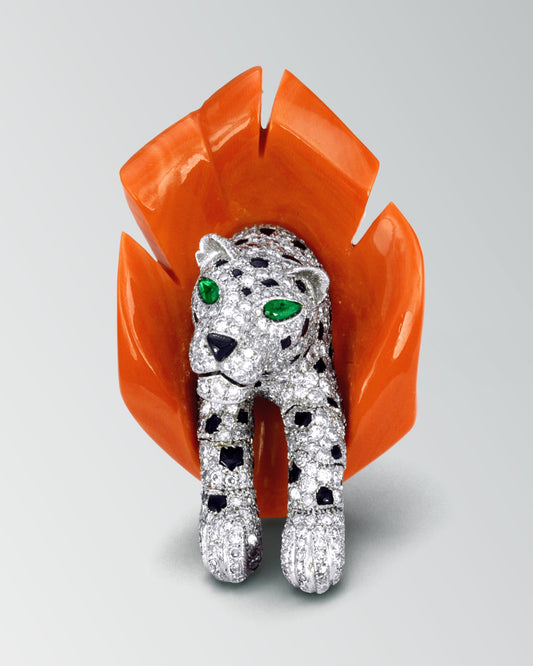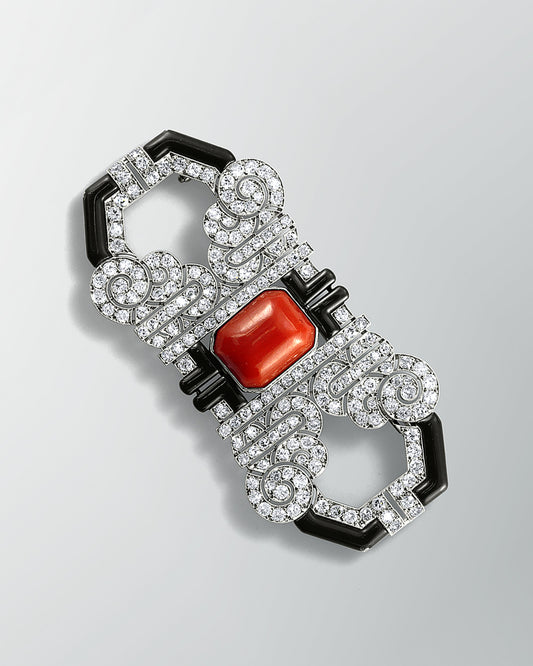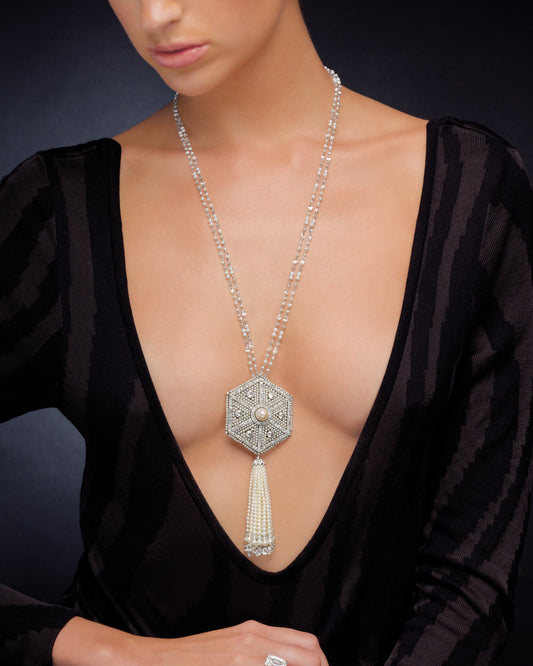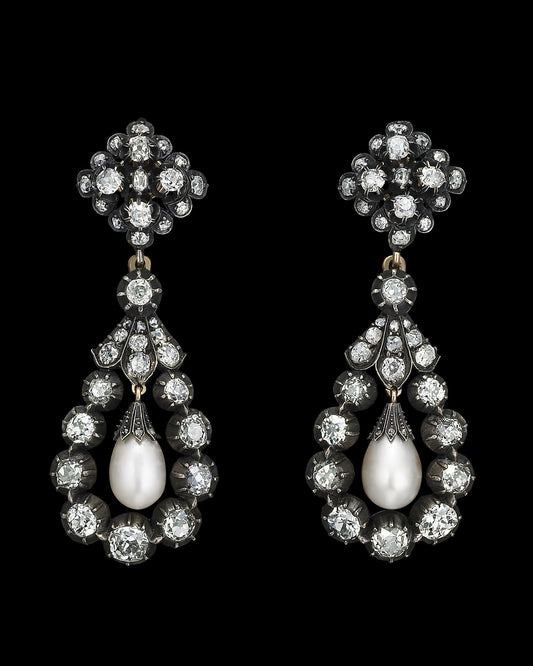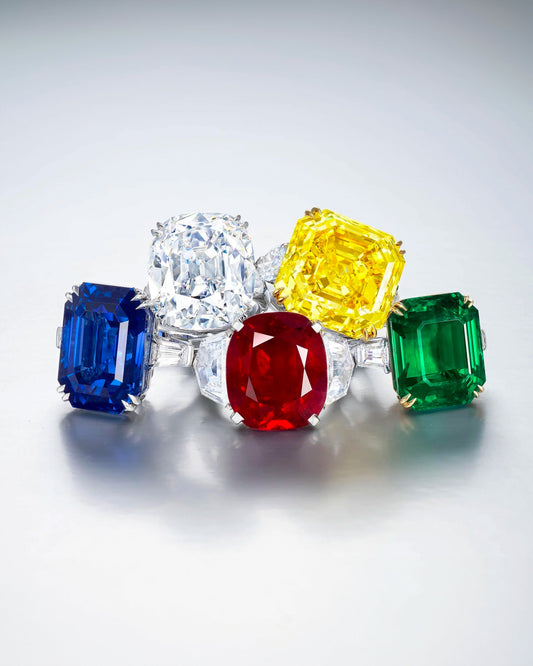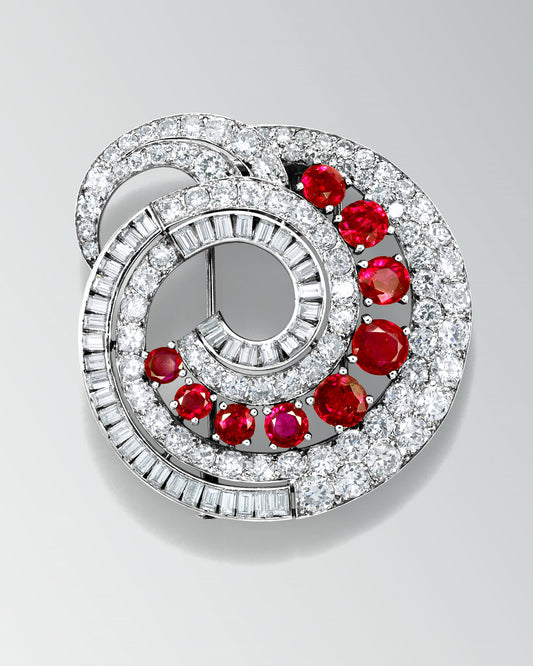
An Old Cut Made New
A cabochon is the purest expression of a gemstone’s colour. Without any facets, there’s nothing to enhance or modify the stone’s beauty. The true colour of the gem is its most powerful asset and makes the cabochon a collector’s dream.
The cabochon is dome-shaped and among the oldest gemstone cuts. It derives its name from the French word "Caboche" which means "head" and is highly valued for its lustrous surface and its ability to display a gemstone's truest colour. While cabochons are available across many gemstones varieties, we deal exclusively in cabochon rubies, emeralds and sapphires which hold a prominent place in our brand’s history.
64.08 carat Cabochon Colombian Emerald and Diamond Necklace.
A collector’s gemstone
In the 1960s and 70s, the Abram family made their name as coloured gemstone dealers and developed a particular passion for the cabochon cut. Many important jewellery houses sourced their cabochons from the family, which continued when Ronald Abram established himself in Hong Kong in 1974. His appreciation of this antique cut led him to become an important collector of cabochon gemstones, which remain a speciality of the House. Today, it is his son JJ who curates the brand’s collection of rare, cabochon gemstones.
Considered one of the oldest stone cutting techniques, it takes a very specific skill to craft the trademark curves of a cabochon so that they are perfectly smooth and symmetrical, revealing depth of colour. Unlike the high-tech laser diamond cutting machines used to shape diamonds, the process of crafting gemstones en cabochon has changed little throughout the centuries. Undertaken almost entirely by hand, mastering the art requires an instinctive understanding of the raw material and an expert eye for colour and proportion.
15.02 carat Sugarloaf Cabochon Kashmir Sapphire Gentleman's Ring.
The sugarloaf cabochon: an exquisite variation
Cabochons are available in a variety of shapes including round, oval, cushion and pear but the Ronald Abram preferred variety is undoubtedly the sugarloaf. Named after the cone-shaped moulds that were used to shape sugar in the early 17th century onwards, the sugarloaf cabochon is characterised by its high-domed, four-sided pyramid shape.
A stunning example of which is found in a magnificent sautoir that once belonged to Elizabeth Taylor. A highlight in her collection, the extraordinary piece was set with a magnificent 65-carat sugarloaf cabochon Burmese sapphire.
Today, sugarloaf cabochons are seldom seen as faceted stones have remained more popular. As a result, most of the sugarloaf cabochons on the market are from estate jewellery pieces. One noteworthy example is a grand 22.88 carat sugarloaf cabochon, Old Mine Colombian emerald displaying a sublime warmth and depth of colour, showcased in a high jewellery ring.
22.88 carat Sugarloaf Cabochon Colombian Emerald Ring.
The Star of Myanmar:
a masterpiece cabochon
One of the finest ruby cabochons, to have passed through our hands, is the Star of Myanmar - a 34.38 carat oval cabochon Burmese star ruby. Soon to be auctioned at Christie’s Hong Kong, its rich, purplish-red colour indicates that it originated from Myanmar’s legendary Mogok mine.
A truly exquisite example of a ruby cabochon, it also displays a captivating natural phenomenon called asterism. Occurring in very few types of gemstones and only when they are cabochon cut, the Star of Myanmar reveals a perfect, six-sided star on the surface when it is illuminated.
The Star of Myanmar Gentleman's Ring.
What to look for in a
cabochon gemstone
The most important factor to consider when contemplating which cabochon to add to your collection is the colour. Unlike faceted gemstones, the colour of which can be enhanced and intensified with the careful placing of facets, a stone must be intrinsically rich and vibrant to create a beautiful cabochon.
Whether it is a ruby, sapphire or emerald, our exacting approach begins by examining the stone’s tone and saturation of colour. Is it vibrant and beautiful? Does it display the same depth and uniformity throughout? Excellent lustre and symmetry are also prerequisites of a Ronald Abram cabochon, both of which can be attributed to the skill of the artisans who polished them.
Emerald cabochons are a Ronald Abram favourite because their colour comes alive in the evening. JJ recently started accumulating a collection of smaller cabochons with the intention of bringing a new, contemporary dimension to this favourite cut. Working with our creative design team, the result is a dramatic pair of drop earrings featuring three graduated rows of round cabochon emeralds, suspended beneath a fan of baguette cut diamonds and fringed with marquise cut diamonds.
The cabochon’s
universal appeal
Like antique diamonds, which also possess more depth, the cabochon is unique in that it gives a jewel volume and its concave curves can be appreciated from different angles. They also lend themselves well to both gentlemens’ and ladies’ jewellery, particularly rings. Their smooth surface and understated lustre make them a unique addition to any collection. No cut better expresses a stone’s innate natural beauty than a cabochon.
